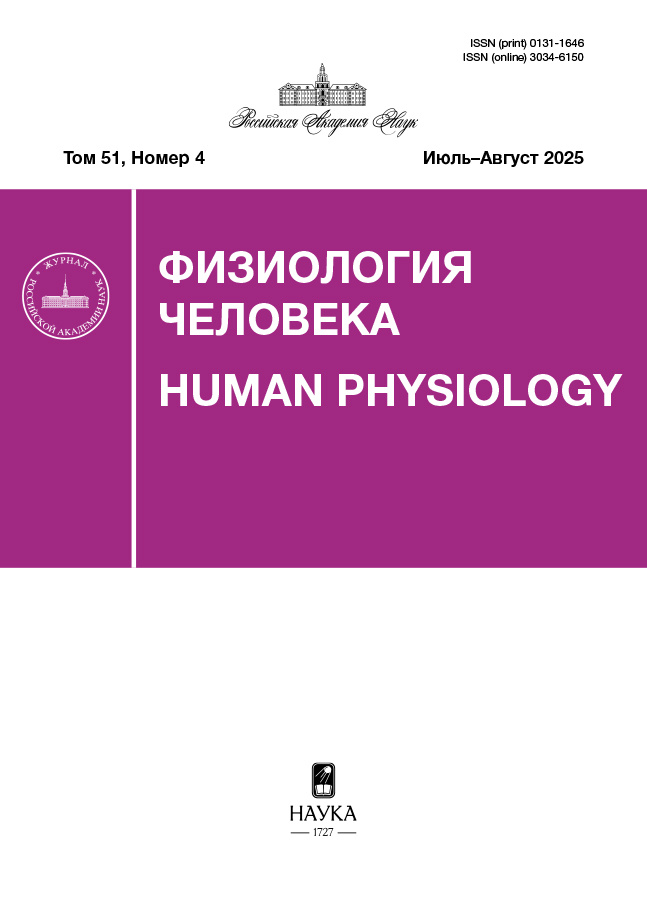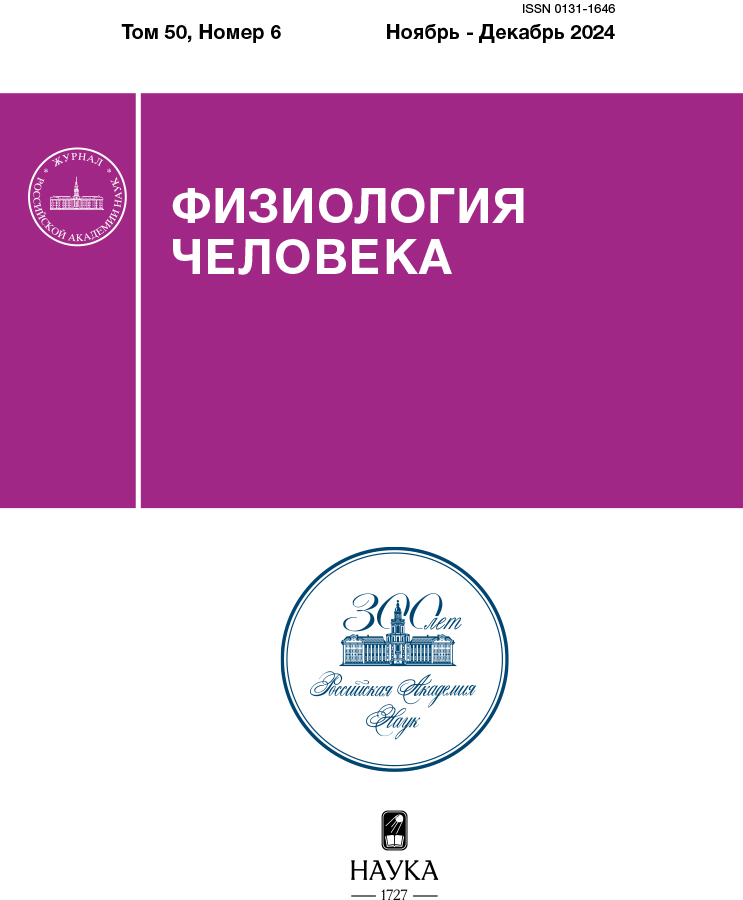Manual Interception of Moving Target in Persons with Parkinson's Disease after a Course of Dry Immersion Sessions
- Authors: Tretjakova O.G.1, Meigal A.Y.1, Gerasimova-Meigal L.I.1, Burkin M.M.1
-
Affiliations:
- Petrozavodsk State University
- Issue: Vol 50, No 6 (2024)
- Pages: 35-43
- Section: Articles
- URL: https://ruspoj.com/0131-1646/article/view/664082
- DOI: https://doi.org/10.31857/S0131164624060041
- EDN: https://elibrary.ru/AGHUNY
- ID: 664082
Cite item
Abstract
This study assessed the effect of a course of ground-based microgravity modeled with seven 45-minute dry immersion (DI) sessions in individuals with Parkinson's disease (PD) (n = 10) on the performance of the task of manual interception of moving target. The proportion of accurate target interceptions, delay and advance in interception, average time of delay and advance were assessed. It was found that, in contrast to the choice reaction time and discrimination reaction time tasks, the DI course exerted no effect on the interception accuracy (the percentage of accurate interceptions ranged from 48% before the DI course to 54% two weeks after it, p > 0.05, Friedman test), the percentage of delays and leads and the mean time of delays and leads (p > 0.05, Friedman test). A possible explanation for such result may be the better clinical condition of individuals with PD due to strict inclusion criteria in the study, insufficient complexity of the manual interception task of a moving target, and preserved reactivity to dynamic stimuli in people with PD.
Full Text
About the authors
O. G. Tretjakova
Petrozavodsk State University
Email: meigal@petrsu.ru
Russian Federation, Petrozavodsk, Republic of Karelia
A. Y. Meigal
Petrozavodsk State University
Author for correspondence.
Email: meigal@petrsu.ru
Russian Federation, Petrozavodsk, Republic of Karelia
L. I. Gerasimova-Meigal
Petrozavodsk State University
Email: meigal@petrsu.ru
Russian Federation, Petrozavodsk, Republic of Karelia
M. M. Burkin
Petrozavodsk State University
Email: meigal@petrsu.ru
Russian Federation, Petrozavodsk, Republic of Karelia
References
- Rodriguez-Oroz M.C., Jahanshahi M., Krack P. et al. Initial clinical manifestations of Parkinson’s disease: features and pathophysiological mechanisms // Lancet Neurol. 2009. V. 8. № 12. P. 1128.
- Yabe Y., Goodale M.A., MacDonald P.A. Investigating the perceived timing of sensory events triggering actions in patients with Parkinson’s disease and the effects of dopaminergic therapy // Cortex. 2019. V. 115. P. 309.
- Vlagsma T.T., Koerts J., Tucha O. et al. Mental slowness in patients with Parkinson’s disease: Associations with cognitive functions? // J. Clin. Exp. Neuropsychol. 2016. V. 38. № 8. P. 844.
- de Dieuleveult A.L., Siemonsma P.C., van Erp J.B., Brouwer A.M. Effects of aging in multisensory integration: A systematic review // Front. Aging Neurosci. 2017. V. 9. P. 80.
- Woods D.L., Wyma J.M., Yund E.W. et al. Factors influencing the latency of simple reaction time // Front. Hum. Neurosci. 2015. V. 9. P. 131.
- Woods D.L., Wyma J.M, Yund E.W. et al. Age-related slowing of response selection and production in a visual choice reaction time task // Front. Hum. Neurosci. 2015. V. 9. P. 193.
- Block R.A., Gruber R.P. Time perception, attention, and memory: a selective review // Acta. Psychol. 2014. V. 149. P. 129.
- Arthur T., Vine S., Wilson M., Harris D. The role of prediction and visual tracking strategies during manual interception: An exploration of individual differences // J. Vis. 2024. V. 24. № 6. P. 4.
- Fooken J., Patel P., Jones C.B. et al. Preservation of eye movements in Parkinson's disease is stimulus- and task-specific // J. Neurosci. 2022. V. 42. № 3. P. 487.
- Jones C.R., Jahanshahi M. Motor and perceptual timing in Parkinson's disease // Adv. Exp. Med. Biol. 2014. V. 829. P. 265.
- Merchant H., Zarco W., Prado L., Pérez O. Behavioral and neurophysiological aspects of target interception // Adv. Exp. Med. Biol. 2009. V. 629. P. 201.
- Lungu O.V., Bares M., Liu T. et al. Trial-to-trial adaptation: parsing out the roles of cerebellum and BG in predictive motor timing // J. Cogn. Neurosci. 2016. V. 28. № 7. P. 920.
- Tresilian J.R. The accuracy of interceptive action in time and space // Exerc. Sport Sci. Rev. 2004. V. 32. № 4. P. 167.
- Li Y., Wang Y., Cui H. Eye-hand coordination during flexible manual interception of an abruptly appearing, moving target // J. Neurophysiol. 2018. V. 119. № 1. P. 221.
- Majsak M.J., Kaminski T., Gentile A.M., Flanagan J.R. The reaching movements of patients with Parkinson's disease under self-determined maximal speed and visually cued conditions // Brain. 1998. V. 121. Pt. 4. P. 755.
- Fukushima K., Ito N., Barnes G.R. et al. Impaired smooth pursuit in Parkinson’s disease: normal cue information memory, but dysfunction of extraretinal mechanisms for pursuit preparation and execution // Physiol. Rep. 2015. V. 3. № 3. P. e12361.
- Fukushima K., Fukushima J., Barnes G.R. Clinical application of eye movement tasks as an aid to understanding Parkinson’s disease pathophysiology // Exp. Brain Res. 2017. V. 235. № 5. P. 1309.
- Melo-Thomas L., Schwarting R.K.W. Paradoxical kinesia may no longer be a paradox waiting for 100 years to be unraveled // Rev. Neurosci. 2023. V. 34. № 7. P. 775.
- Zago M., Lacquaniti F. Visual perception and interception of falling objects: A review of evidence for an internal model of gravity // J. Neural. Eng. 2005. V. 2. № 3. P. S198.
- Wollseiffen P., Klein T., Vogt T. et al. Neurocognitive performance is enhanced during short periods of microgravity – Part 2 // Physiol. Behav. 2019. V. 207. P. 48.
- Kuldavletova O., Navarro Morales D.C., Quarck G. et al. Spaceflight alters reaction time and duration judgment of astronauts // Front. Physiol. 2023. V. 14. P. 1141078.
- Meigal A.Y., Tretjakova O.G., Gerasimova-Meigal L.I., Sayenko I.V. Program of seven 45-min dry immersion sessions improves choice reaction time in Parkinson's disease // Front. Physiol. 2021. V. 11. P. 621198.
- Tomilovskaya E.S., Kirenskaya A.V., Novototski-Vlasov V.Y., Kozlovskaya I.B. Event-related EEG changes preceding saccadic eye movements before and after dry immersion // J. Gravit. Physiol. 2004. V. 11. № 2. P. P33.
- Meigal A.Y., Gerasimova-Meigal L.I., Saenko I.V., Subbotina N.S. “Dry Immersion” as a novel physical therapeutic intervention for rehabilitation of Parkinson’s disease patients: A feasibility study // Phys. Med. Rehab. Kuror. 2018. V. 28. № 5. P. 275.
- Schade S., Mollenhauer B., Trenkwalder C. Levodopa equivalent dose conversion factors: An updated proposal including opicapone and safinamide // Mov. Disord. Clin. Pract. 2020. V. 7. № 3. P. 343.
- Babanov N.D., Biryukova E.A., Dzheldubaeva E.R. et al. Dynamics of parameters of low-amplitude hand movements in a repetitive motor-cognitive task // Neurosci. Behav. Physiol. 2021. V. 51. № 6. P. 774.
- Waldthaler J., Stock L., Student J. et al. Antisaccades in Parkinson’s disease: A meta-analysis // Neuropsychol. Rev. 2021. V. 31. № 4. P. 628.
- Shaikh A.G., Antoniades C., Fitzgerald J., Ghasia F.F. Effects of deep brain stimulation on eye movements and vestibular function // Front. Neurol. 2018. V. 9. P. 444.
- Gerasimova-Meigal L., Meigal A., Sireneva N., Saenko I. Autonomic function in Parkinson's disease subjects across repeated short-term dry immersion: Evidence from linear and non-linear HRV parameters // Front. Physiol. 2021. V. 12. P. 712365.
- Amirova L., Navasiolava N., Rukavishvikov I. et al. Cardiovascular system under simulated weightlessness: Head-down bed rest vs. dry immersion // Front. Physiol. 2020. V. 11. P. 395.
- Corvol J.C., Artaud F., Cormier-Dequaire F. et al. Longitudinal analysis of impulse control disorders in Parkinson disease // Neurology. 2018. V. 91. № 3. P. e189.
- Zheng R., Maraj B.K.V. The effect of concurrent hand movement on estimated time to contact in a prediction motion task // Exp. Brain Res. 2018. V. 236. № 7. P. 1953.
- Dubrowski A., Lam J., Carnahan H. Target velocity effects on manual interception kinematics // Acta Psychol. (Amst). 2000. V. 104. № 1. P. 103.
Supplementary files












